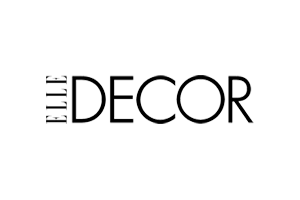
Inspiration
9 ways with tiles
Walls and floors may be functional but they are also a backdrop for the rest of your interior design scheme. Anita Rivers, our lead product developer, has a keen eye for colour and knows a thing or two about using tiles to make the most of a space. We managed to catch a few moments with her to get her thoughts on decorating with tiles.
Our Nice & Easy Long Brick tiles from our Contemporary Classics collection illustrate how a larger tiles can create the illusion of space
No. 1 | A small room doesn’t have to have small tiles
People often think a small space needs a small tile. But in fact a larger tile provides more colour and fewer grout lines, creating the illusion of a larger space. With floor tiles, the eye flows across the floor, and grout lines will barely be noticed. Rectified tiles reduce the size of grout lines, creating a modern, flat look. On walls, if you lay by eye rather than using spacers, you can achieve a finer grout line, again making the space seem bigger.
No. 2 | Use different shades of the same colour
In the 80s there was a trend for putting clashing colours together – bright reds with yellows, for example. Today we prefer colour to work in harmony. The easiest way to achieve this is to choose different shades of the same colour; think of a column of colours on a paint chart - lighter and darker shades of the same colour, working in harmony together. This is also a good way to match other things in your kitchen. For example if you have kitchen units of a particular colour, choose a darker or lighter shade of that same colour.
Our Slate Blue skinny metro brick tiles from our Marlborough Matt collection, have been paired with light coloured Fawn Nature floor tiles from our Sandstone collection to balance the dark colour of the wall tiles.
No. 3 | Don’t use matt tiles in a dark room
Matt finishes absorb light from a room, and make a dark room seem even darker. When considering floor tiles, choose a honed surface – where the porcelain has been lightly polished to give it a sheen. This makes a room feel brighter. You might also consider a slightly undulating surface, which will reflect what light there is in different directions.
Here a classic navy kitchen has been styled with our blue-toned Savernake College Fields and yellow-toned Halycon Saffron to show how colour can warm or cool a space
No. 4 | Use blue tones to cool a room, yellow tones to warm it
If you have a very brightly lit, sunny room, choose a floor tile colour with a very slightly blue tone to it. If it’s a room with a cold feel, maybe on the northside of a house, choose a floor tile with a subtle yellow tone. These tones aren’t necessarily obvious - think of a grey with a very, very slight blueness to it (which will cool a room), or a grey with a very slight yellow, brown or pink (which will warm a room).
Our Seville Small Brick tiles from our Andalucia collection have been laid in a herringbone pattern from the kitchen through to the living area to create a seamless flow
No. 5 | Lay floor tiles to enhance the proportions of a room
The direction in which floor tiles are laid can have a huge impact on how we experience the proportions of a room. Always place a whole tile at the entrance to a room as this creates the feeling of flow. If the room is narrow, run the flooring across the room. It is short, run the flooring from one end to the other. Try using different widths of planks to add character.
A combination of Kensington Jade, Victorian Green and Juniper square brick tiles finished with Medium Grey grout
No. 6 | Choose at least three colours if you’re creating a random colour pattern
If you want to create a random looking blend of colour tiles on a wall, choose at least three colours to avoid a chequerboard effect, and don’t be afraid to put two tiles the same colour next to each other. Using four colours or more it makes it easier to achieve a random effect. Rather than leaving it to your tiler, it’s an idea to lay out the pattern you want for the tiler to follow.
L-R: Savernake in Silverless Street with Silver Grey grout and Figgins Lane with White grout
No. 7 | The colour of grout can do a lot to enhance a tile design
In fact, grout colour can change the way we perceive the colour of tiles. Strong colours like white or black will draw attention to grout lines, whereas softer colours like light greys will blend in. You can create very different looks by choosing to draw attention to the geometry of the design or to create more of a colour block effect.


Laying out floor and wall tiles together before you begin tiling can help to create a cohesive design scheme
No. 8 | Lay tiles out before tiling begins
Whether floor or wall tiles, always take them out of the boxes and lay them out on a surface or the floor. Make sure you’re happy with the pattern and colour variation. Choose tiles that give a pleasing variation of shade and tone.
No. 9 | Choose tiles from the same collection
When we create collections, we make sure the overall palette works together, so you can choose colours from across any collection and be confident that they will look stunning. These colours aren’t simply darker or lighter shades of the same colour; they are different colours, but they’ve been carefully chosen to have a similar tone.
__
Whether it’s planning a design project, advice on how many tiles you need or help with coordinating a colour scheme, we pride ourselves on going out of our way to help you choose the perfect tiles for your project. Our team is on hand to help - simply get in touch.
As featured in…


























